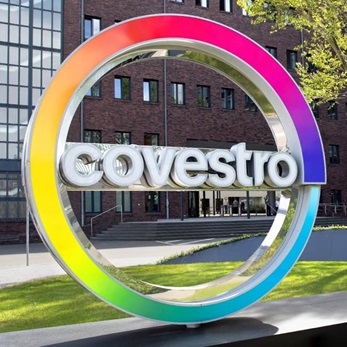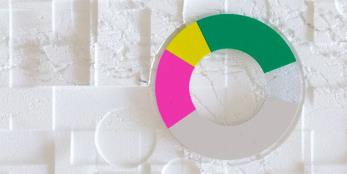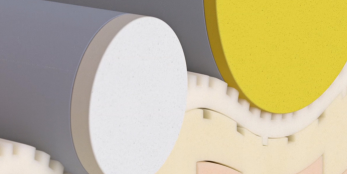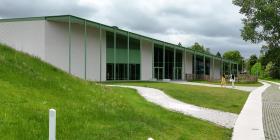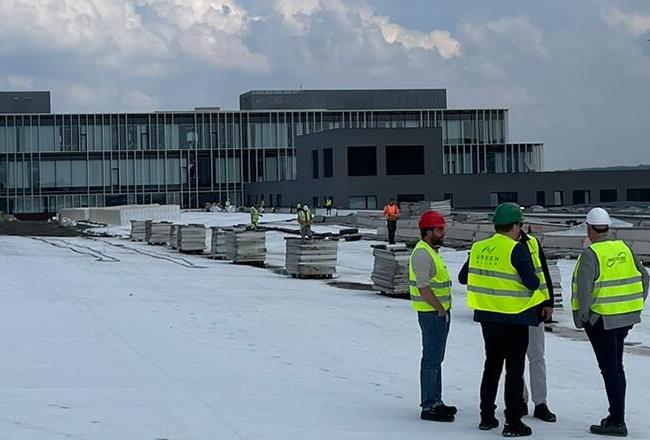
Retrofitting the future: How TVH chose low-carbon insulation boards for a cooler and more sustainable roof
What kicked off this project, Pieter?
Pieter Loosveldt (TVH): The retrofit was part of our broader facility maintenance and sustainability strategy. We had three clear goals: improve thermal insulation performance, renew the roofing as part of long-term building upkeep and use sustainable materials. The roof sits atop a logistics building where people work, so keeping it cool in the summer and warm in the winter – with minimal energy use – was essential.
Fernando, how did Covestro get involved?
Fernando Resende (Covestro): We’ve worked closely with Recticel for years, providing the raw materials for their insulation products. For this project, our climate-neutral1 Desmodur® CQ MS played a central role. It’s an MDI – methylene diphenyl diisocyanate – based on bio-circular raw materials, allocated via a certified mass balance approach. This more sustainable production process significantly reduces embodied carbon in construction, allowing Recticel to offer TVH insulation boards that cut embodied CO₂ emissions by 43%² – without compromising on thermal insulation performance.
Why did you choose these specific insulation boards, Pieter?
Pieter: It was the perfect fit for what we needed. We couldn’t use rock wool because the structure wouldn’t support it – especially with solar panels on the roof. Recticel’s low carbon insulation solution offered the right balance of performance, sustainability and weight. The reduced carbon footprint was an important factor in our decision.
Fernando, could you explain why Desmodur® CQ MS is a game changer?
Fernando: Certainly. Desmodur® CQ MS is a climate-neutral1 MDI that allows manufacturers like Recticel to produce polyurethane (PU) insulation boards with a much lower environmental and carbon impact – thanks to its 25% bio-circular attributed content. And it's a drop-in solution, meaning it requires no changes in existing production processes. That makes it easy for companies to switch to more sustainable building materialswithout losing time or efficiency.
It’s also important to highlight the mass balance approach behind this product. This method allows us to incorporate bio-based raw materials into conventional production, attributing renewable content to the final product without altering its technical performance. It’s certified under ISCC PLUS, ensuring both transparency and credibility while delivering a significantly lower carbon footprint compared to fossil-based alternatives.
What were the key learning opportunities along the way?
Pieter: There was just one major challenge: the solar panels on the roof could only be offline for a short window. That meant we had an extremely tight schedule – but we stuck to it. The construction team did an outstanding job.
Fernando, how do projects like this align with broader goals in the construction sector?
Fernando: Perfectly. Our goal is to reduce embodied carbon in construction and our materials, by shifting from fossil-based to alternative raw materials. The construction industry is a key focus, and this project demonstrates how we can scale more sustainable building materials without sacrificing performance.
But to accelerate broader adoption, the industry needs stronger policy support and certification systems that reward more sustainable building practices. We’re still lacking a robust regulatory framework that actively encourages the use of low carbon insulation and green building materials. That’s a major hurdle – especially considering that embodied carbon from materials accounts for nearly 25% of emissions in the global construction sector.
Let’s talk long-term. Pieter, is this a one-off or part of something bigger?
Pieter: This initiative is a cornerstone of our long-term strategy. We are committed to a structural approach to maintaining our real estate portfolio, ensuring our buildings are future-proofed through more sustainable building materials and building retrofit solutions.
What would you say to other companies considering sustainable building materials?
Fernando: Start small – pilot a sustainable solution on one project. You’ll see the benefits, not just environmentally but also in long-term performance and cost. Today’s low-carbon insulation and construction materials are reliable, durable and readily available. Waiting could mean missing out and facing steeper regulatory and market demands down the line.
To support the shift towards more sustainable building materials, we’ve launched the BetterBuildings Hub – a platform where professionals can explore real-world examples and proven sustainable solutions. Beyond that, we’re active in industry events and maintain close ties with universities, associations and construction experts to raise awareness about innovative, low-carbon and recycled materials.
Pieter: And if more companies adopted our pace of renovation, things would move a lot faster across the board. There’s definitely room for others to follow our lead.
Do you see a growing industry shift toward retrofitting?
Fernando: Yes, there’s growing interest in sustainable retrofitting, especially due to stricter regulations and energy efficiency goals. However, new construction still often takes priority because it’s seen as easier to plan and execute. The balance is shifting, but slowly. That said, building retrofit solutions are essential if Europe wants to achieve its sustainability goals – there are simply too many existing buildings still contributing heavily to CO₂ emissions.
Finally, what’s next for insulation innovation?
Fernando: Over the next 5 to 10 years, we expect to see a major increase in sustainable raw material usage, recycling – both mechanical and chemical and improved circular economy approaches. We’ll see polyurethane (PU) insulation with its trademark thermal insulation performance, but with far superior environmental credentials and reduced carbon footprint. That’s the direction we at Covestro are committed to driving.
1 Climate neutrality is the result of an internal assessment of a partial product life cycle from raw material extraction (cradle) to the factory gate (of Covestro), also known as cradle-to-gate assessment. The methodology of our LCA with external audit and certification is based on the ISO 14040 and 14044 standards. The calculation takes into account biogenic carbon sequestration based on preliminary data from the supply chain. No compensation measures were applied.
2 Internal LCA calculation according to EN15804+A2 standard, for modules A1 - A3 (cradle to gate), based on the mass balance method.

